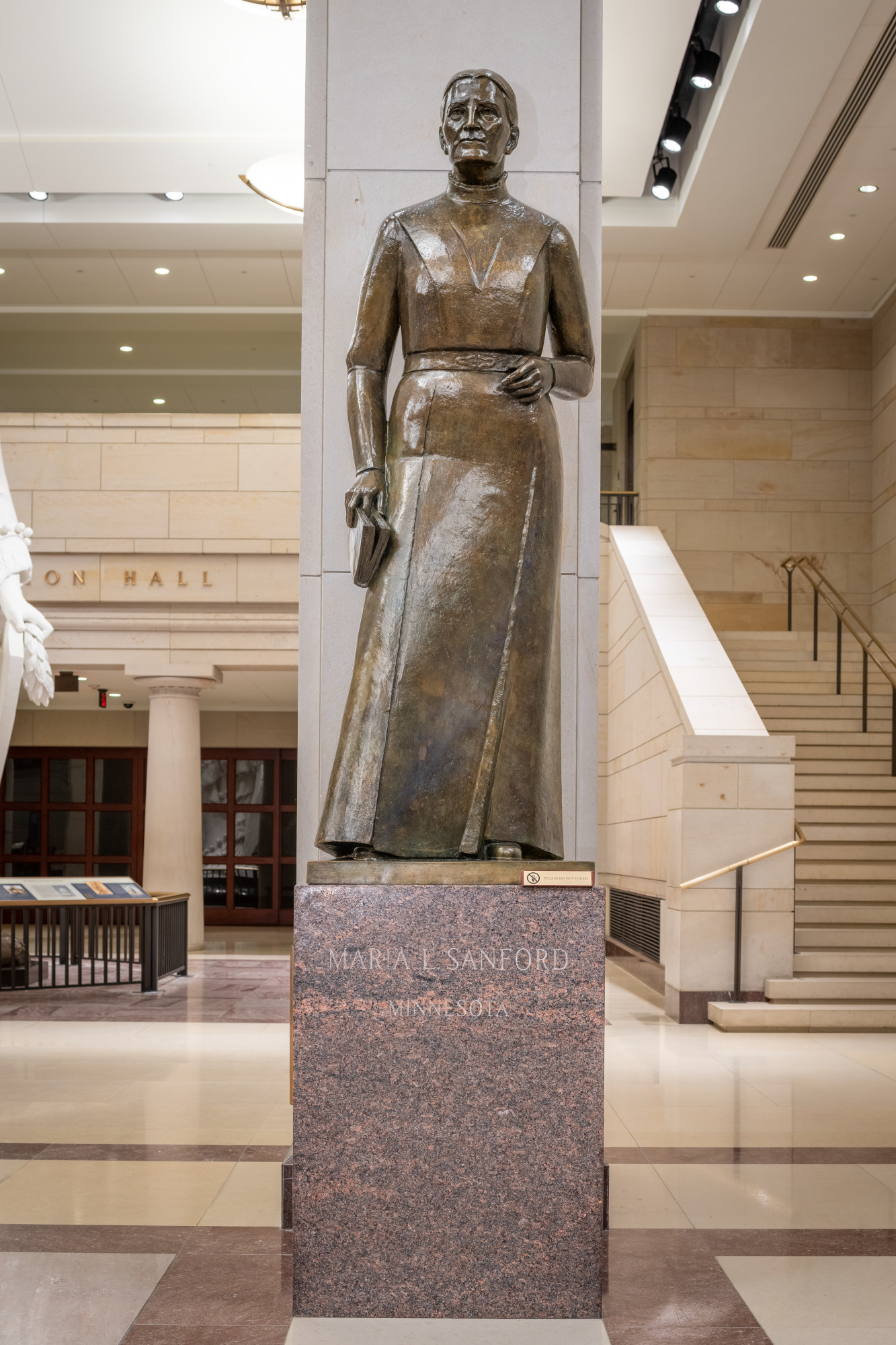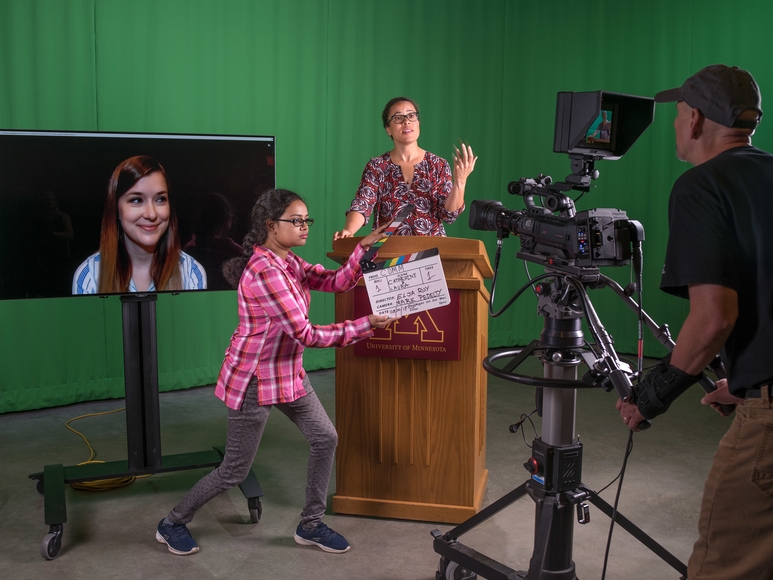History and Evolution of the Department
The University of Minnesota's Department of Communication Studies continues a rich heritage of teaching and research. Our roots in written and oral performance, in debate, in the history and criticism of oratory, and in the history and theory of criticism of both art and literature date back to 1880 as faculty members in the Department of Rhetoric and Elocution offered classes in these areas. Maria Sanford, one of the first female professors in the United States, the first female professor in the State of Minnesota, and a professor of rhetoric and elocution, taught rhetoric and oratory at the University of Minnesota from 1880 to 1909. William Watts Folwell, the first president of the University of Minnesota, noted that hiring Sanford was one of his proudest achievements.

Sanford, a master teacher, led an independent Department of Rhetoric and Elocution for nearly thirty years before the field emerged as a professional discipline as we understand it today. She defined the rhetoric curriculum at the University of Minnesota in the post-Civil War period, worked to establish intercollegiate debating as an intellectual and civic good, and offered graduate courses in criticism. She was an environmentalist, advocating for wilderness conservation. She raised public awareness about child labor and urged health improvement for indigenous populations. She believed in her responsibility for civic action and offered public lectures four to five nights a week to various audiences, including civil groups, farmers' organizations, and teachers' colleges. She emphasized the development of character and moral values as the purpose of education. During WWI, she traveled the country and delivered patriotic speeches. Sanford was influential in Minnesota's intellectual and political culture. Her statue is one of the two Minesotans and among the 11 statues of women included in the National Statuary Hall Collection in Washington, DC.
The Department became the Department of Rhetoric and Public Speaking in 1907, which offered an innovative synthesis of writing and speaking courses and highlighted a sense of civic engagement. Edward Eugene McDermott was pivotal in setting the foundation of a public speaking curriculum. In 1921, the Department merged with the Department of English.
After Frank Rarig led the charge for an independent speech department, the Department of Speech was established in 1926 with three foci: rhetoric and public address, drama, and speech pathology. Speech emerged as a distinct discipline, requiring faculty with unique qualifications to teach the subject matter. The Department continued to grow under the leadership of Frank M. Rarig (Chair, 1927-1948) and H. B. Gislason, two of the 17 founding members of the National Association of Academic Teachers of Public Speaking in 1914.
The Department was renamed the Department of Speech and Theatre Arts in 1951 and the Department of Speech, Communication, and Theatre Arts in 1966. In 1969, the Department of Speech Science, Pathology, and Audiology was established, allowing the Department of Speech, Communication, and Theatre Arts to narrow its focus. This focus was further narrowed in 1971 when the Department split into two, creating the Department of Speech Communication and the Department of Theatre Arts. As the Department of Speech Communication grew, it moved from Folwell Hall to Ford Hall.
Under the guidance of faculty members such as Ernest Bormann (the originator of symbolic convergence theory; President, Central States Communication Association, 1971-1972), David Rarick, William S. Howell (President, Speech Communication Association, 1971), J. Vernon Jensen, and Robert Scott (Chair, 1971-1989; 1992 NCA Distinguished Scholar), scholarship in the Department flourished. The addition of Karlyn Kohrs Campbell (Chair, 1993-1996; 1999-2009), Alan Gross (2014 NCA Distinguished Scholar), Rosita Albert, and Ronald Walter Greene (Chair, 2012-2021) further broadened the field of inquiry and deepened the scholarship in the Department, paving the way for renowned scholars such as Susanne Jones (Interim Chair, 2021-2022), Mary Douglas Vavrus, Ascan Koerner, and Laurie Ouellette to join the faculty. In recent years, Kate Lockwood Harris (Director of Graduate Studies, 2023-present) and Elaine Hsieh (Chair, 2022-present) have led and challenged the field to reimagine communication scholarship through their interdisciplinary approaches.
In 2002, the Department of Speech Communication became the Department of Communication Studies to highlight the wide range of courses we offer and the scholarship we embody. Our public speaking courses and many performance-based courses continue to serve students across campus to build essential skills that ground all effective and appropriate communicators in the 21st century. Our undergraduate and graduate programs represent humanistic, historical, critical, and social scientific studies of messages, including written communication, rhetorics and public discourse, critical media studies, mediated communication, intercultural communication, interpersonal communication, organizational communication, and health communication. Today, with 29 faculty members, 30+ graduate students, and 400+ undergraduate majors, the Department embodies a broad array of expertise and interests.

In this photograph, we capture and connect our areas of study: rhetoric, speech, media studies, media production, interpersonal communication, and organizational communication. Scholars in each of these fields ask similar questions regarding the nature, meaning, and matter of human communication, differentiated by scale, media, and purpose.
Social justice reflects and encapsulates the core themes of our faculty members' work. Together, faculty members have investigated social justice on interpersonal, organizational/institutional, national, sociocultural, and sociopolitical levels. The Department has collaboratively and organically converged in addressing issues faced by a world in crisis. We also lead the field in feminist communication theory, with faculty members tackling diverse social issues to address inequality and injustice in our communities. In addition, the teaching faculty members have also contributed to the areas of diversity, equity, and inclusion by focusing on instructional pedagogy and community-based projects. Both faculty members and graduate students are committed to building and incorporating DEI principles in a predominately White institution through our teaching, research, and service.
The Department emerged from the pandemic with an unwavering commitment to pursuing public good by nurturing citizen-teacher-scholars to engage with our communities by critically reflecting and challenging existing structures and infrastructures that silence the Other. Faculty members of the Department have crossed over our historical division of three tracks (i.e., rhetoric, relational/organizational communication, and critical media studies) based on methodological approaches and worked to identify and collaborate in shared interests and substantive areas. We aim to build on our collective theme of social justice and broaden our understanding and investigation of disparities and public urgencies in our lived environment — with a focus on communicative practices in contexts. Through our research, teaching, and services, we are committed to collaboratively and creatively generating resources and opportunities to support an environment that embraces diversity, accountability, community, and excellence.